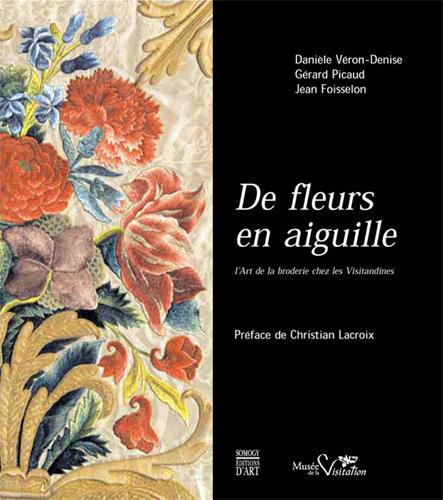The valorisation of the “Patrimoine” is a great success in France, specifically during the famous “Days” when the public can discover the multiple aspects of them. Some of them, nevertheless, like works concerned by “paramentique” (all the textile material used for the celebration of the catholic worship), are not easy access for the public, as well on the plan of their comprehension as, quite simply, on that of their physical approach, because there exists not enough places adapted to their presentation and their conservation.
It is also a ground of research still little known, in spite of some works and some expositions organized by precursors.
Therefore it was significant at the time of the new exposition of the museum of the Visitation, to take a basic action in this field.
Inexhaustible sources of rapture, the textile works carried out or preserved by the Visitandines are captivating, in particular because of their state of conservation. They constitute moreover one unit of a great coherence, since they are almost exclusively related to the life of the monasteries of the order.
This choice makes it possible to reveal new treasures belonging to the order of the Saint-Mary Visitation. It also allows, for the first time, to approach the study of such a significant corpus of embroideries of monastic origin.
The study of the embroidered parts, whose clothes confection is distributed over four centuries, required the intervention of a qualified person on the matter. Daniele Véron-Denise, member of the scientific Committee of the Museum since years and author of many articles on the French embroidery, accepted this task.
A part of the masterpieces presented in this book cover a double artistic and religious vocation, and this is why this book, beyond their simple descriptions, obliges to recall the medium which saw them being born, the conditions of their design, their creation, their use, their transformations… within the inaccessible universe of the fence.
The reader will have understood it, a treasure is given to him here to contemplate. Historical treasury by the seniority of the ornaments, treasure also by the richness and the diversity of materials, by their skilful execution, but also sometimes by the charm of their naivety and finally by all that these ornaments reveal us on the “women of the silence ” who conceived them.
The embroidery, complex art and sometimes scientist, collective and often anonymity, made it possible to the Visitandines to express their faith with their heart and nimble fingers. In the intimacy of the cloisters, with wire and needles, they created decorations, flowers and figures, for the greatest glory of God and for the pleasure of your eyes.

